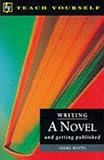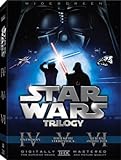Story Arcs – What are they?
A story arc is an extended storyline used to effect change in character, group of characters, or a situation in a piece of writing. Although they are more usually used in television, or other forms of serialisation, they can also be used with good effect in a longer piece of work, such as a novel.
The Eight Point Arc

An example of a very common form of story arc is “The Eight Point Arc”. I first came across this type of arc in “Writing a Novel” by Nigel Watts (Hodder & Stoughton).
The book is currently out of print, but some Amazon sellers do hold old or second hand copies (I got mine for £0.01p plus postage).
This article is dedicated to Mr Watts’ inspiration.
(And additionally to Luke and friends for serving to illustrate the framework so well!)
1. Stasis
This is the normal day-to-day reality of the story. Think of Luke Skywalker working on the farm and fixing droids. Luke dreams of becoming something bigger in his life.
2. Trigger
This is an unusual event that is beyond the control of your hero or heroine. A trigger does not have to be a large event. It can quite easily be a droid with an unusual recording in its memory banks…
3. The Quest
The quest may change or stay the same throughout the story arc. In Luke’s case he wants to know who the woman is in the recording, then it becomes a quest for love and then a battle against the empire and then…well, you know the rest.
4. Surprise
For a story to remain interesting, there must be some kind of conflict or obstacle for the protagonist to overcome. In this part of the story arc we are looking for such an event, but it must remain believable and is better if it is unexpected.
The surprise needs to change the day-to-day reality (stasis) for the chief character in your story and propel them forward, else they could just ignore the event and go back to “normality”. For example, when Ben Kenobi asks Luke to travel to Alderan, he initially refuses.
In Luke’s case the surprise event in his story arc would be when the empire destroys the farm and kills his parents. This surprise is of sufficient magnitude to propel the character forward: it irrevocably changes the status quo, is not easily predicted and also sets the tone for the “character” of the Empire.
5. Critical Choice

This is an apparently insurmountable problem for the protagonist. This is the “What am I going to do now?” part of the story arc. The decision generated should be a critical choice and not a trivial one, as it is a great opportunity for your lead character to show their deeper nature.
In Luke’s case, he elects to leave Tatooine to pursue the battle against the Empire and find Princess Leia. A lesser character might have decided that the Empire was too powerful and that there was little chance of finding one person in the vastness of space.
This choice is an indication of the determination and heroic qualities of Luke.
6. Climax
The obstacles placed in the way of a protagonist are there to test your character. These tests should effect a definite change.
The climax in Star Wars IV could be considered to be when Luke finds Princess Leia and rescues her from the Death Star, but of course there is more to come. Luke is now part of the Rebellion and takes part in the attack to destroy the Death Star.
7. Reversal
Even with the Rebel Forces in possession of the plans to the Death Star, it is still a formidable target. This continued threat helps to add tension, but it is likely it will be destroyed as the pilots are well trained for the mission.
Of course, the carefully laid plans suffer a reversal when Darth Vader and his wingmen spoil the Rebels’ attack. As the Rebel forces are slowly being destroyed, all looks lost…
8. Resolution
…until Luke takes his fighter to the exhaust port and successfully hits the target, thus destroying the Death Star and establishing himself as a hero of the Rebellion. This fulfils his initial drive to be “something bigger” and could easily lead to a new “stasis”. Of course, for Luke, his story is only just beginning.
Arcs within Arcs

Luke’s story arc is but one among many in “A New Hope”. A rich plot will have many such story arcs, affecting many characters. However, the main arc should always centre on the main protagonist and that arc should be a means to demonstrate how they have changed as a character.
Sometimes a return to stasis is the deliberate aim of a story arc and changes in the character are only of a very minor nature. It is this kind of return to stasis that television writers often use.
In this type of story arc, the chief character explores many different events but often effectively remains unchanged. If not done exceptionally well, this lack of change and character growth can leave an audience unsatisfied and is in most cases probably best avoided.
Using Story Arcs
The “Eight Point Story Arc” detailed here is not a plotting panacea. Writing a long piece of work, such as a novel, is a complex process. Trying to plan a book from this material alone may leave the plot feeling too directed or stilted.
A better use for it may be in analysis of an existing story, or a work in progress. If the story is lacking direction then trying to identify the various part of the story arc might well shed light on what is missing and help you on your way again.
